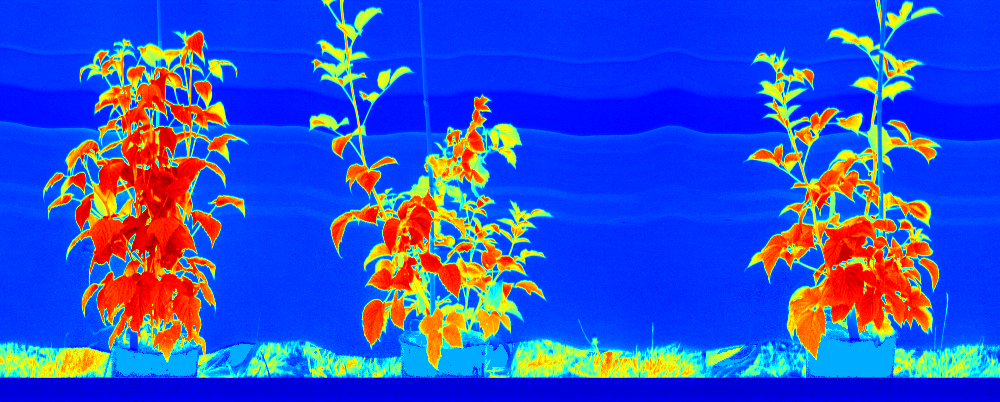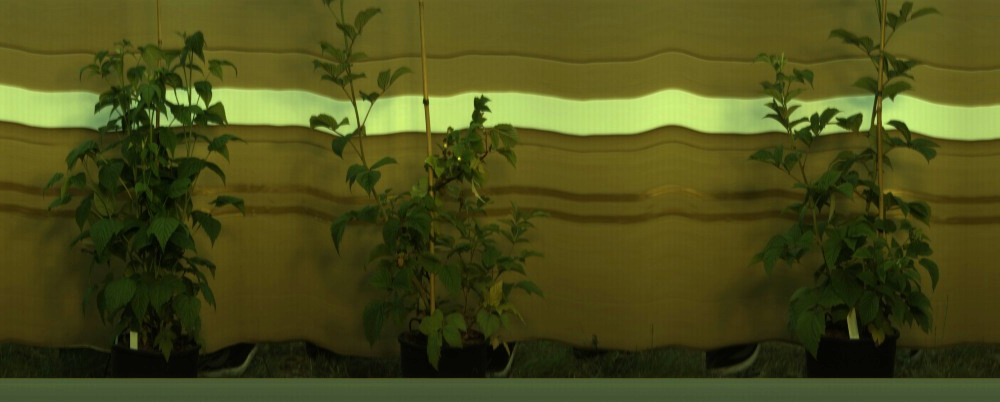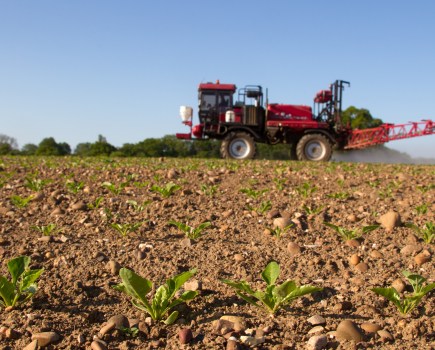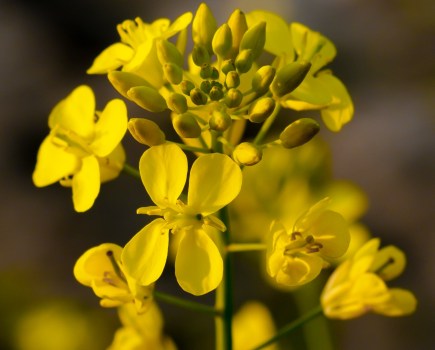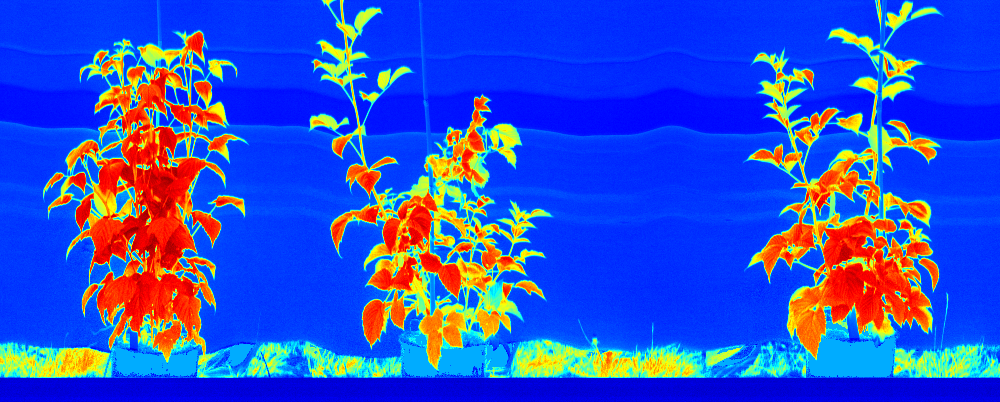
A cutting edge new technology system, which can remotely monitor soft fruit crops for stresses, is being developed.
The automated imaging system is able to monitor and measure how plants respond to stresses such as drought or attacks by pests or diseases.
Once fully developed, it is hoped the system will not only enable growers to keep a constant remote monitor for signs of stress on crop areas or individual plants, but could even control fertigation or alert growers to when crop protection is needed.
The project is funded by an Innovate UK consortium, including AHDB Horticulture and The James Hutton Institute.
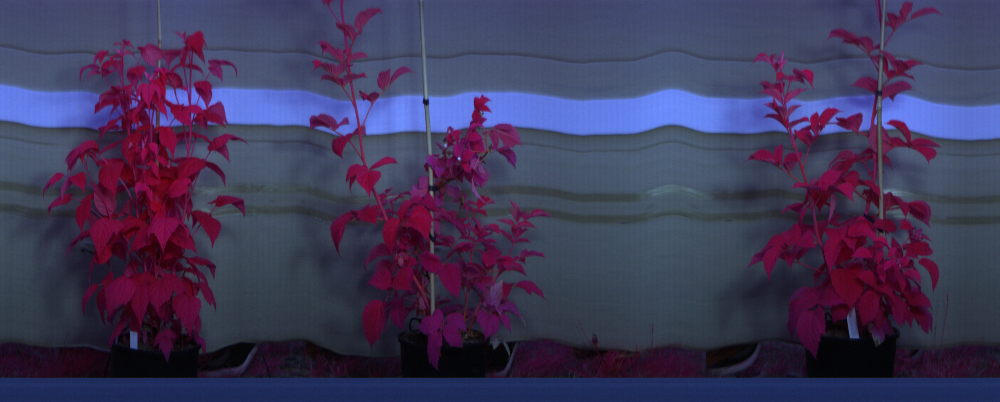
Spectral-reflectance-image-with-light-absorbing-molecules-in-leaves.
Explaining the genetic role in plant stress management, and the role imaging systems can play in this, Julie Graham, Geneticist and project lead at James Hutton Institute said: “Plants adjust stomatal opening to maintain water balance and nutrient uptake, control leaf temperature and optimise photosynthesis – and the better they’re able to make that adjustment, the more likely they’ll be able to tolerate stress.
“The effects can be monitored and measured using imaging technologies, for example, infra-red thermography can measure leaf temperature, which is related to stomatal opening and is a reliable indicator of plant physiological status.”
Other environmental stresses can induce a range of changes in the leaf surface and internal structure, cause certain compounds to accumulate or lead to the breakdown of photosynthetic pigments.
Some of these changes can alter the colour of the leaf, imperceptible to the human eye but detectable by an imaging technique known as spectral reflectance, which can be used to monitor the plant canopy to acquire information on alterations in the leaf biochemistry. These ‘spectral signatures’ can be analysed by computer and compared with a ‘library’ of signatures expected from an unstressed plant or one exposed to known stresses.

Spectral-reflectance-image-with-light-reflecting-molecules-in-leaves.
Scott Raffle, Knowledge Exchange Manager at AHDB Horticulture said: “This project is particularly exciting, as through the use of technology such as infra-red thermography and spectral reflectance imaging, we expect to be able to monitor changes in shoot and leaf physiology, to give an indirect indicator of root stresses.
“Poor soil conditions, variable availability of water and attack by root rot pathogens or root-feeding pests such as vine weevil larvae, can all stress the roots of crops such as raspberry. We hope, in the future, this system will provide growers with the technology to respond to these challenges more efficiently than by manually walking their growing areas to monitor plant stresses.”
The system has primarily been conceived as a tool to help soft fruit breeders select plants resistant to stresses such as drought or attacks by pests or diseases. The equipment will provide a means of not only assessing the stress responses of large numbers of breeding lines very quickly, it will also give some objective measure of their stress resistance.
Dr Louise Sutherland, Chair of the Soft Fruit Panel, AHDB Horticulture said: “New resilient varieties of soft fruit crops that need less fertigation and are more resistant to pests and diseases are crucial for the industry, which faces increasing pressure on the availability of water, a reduction in the armoury of crop protection products and higher fertiliser costs, and so technological advancements that can help soft fruit farmers to combat these pressures are crucial.”
An additional project that will develop early detection of stress, specifically in strawberry plants, using hyperspectral image analysis, is being run by a PHD Studentship programme funded by AHDB Horticulture.

